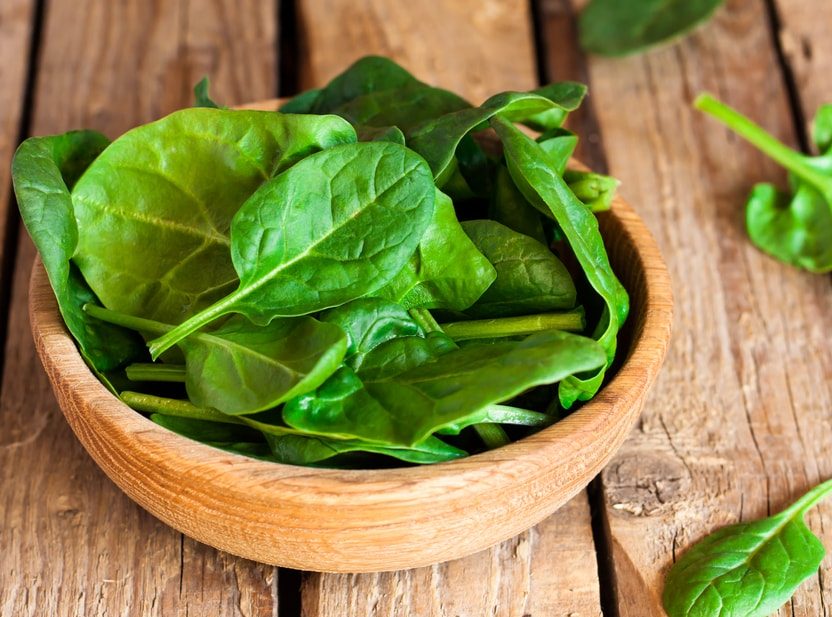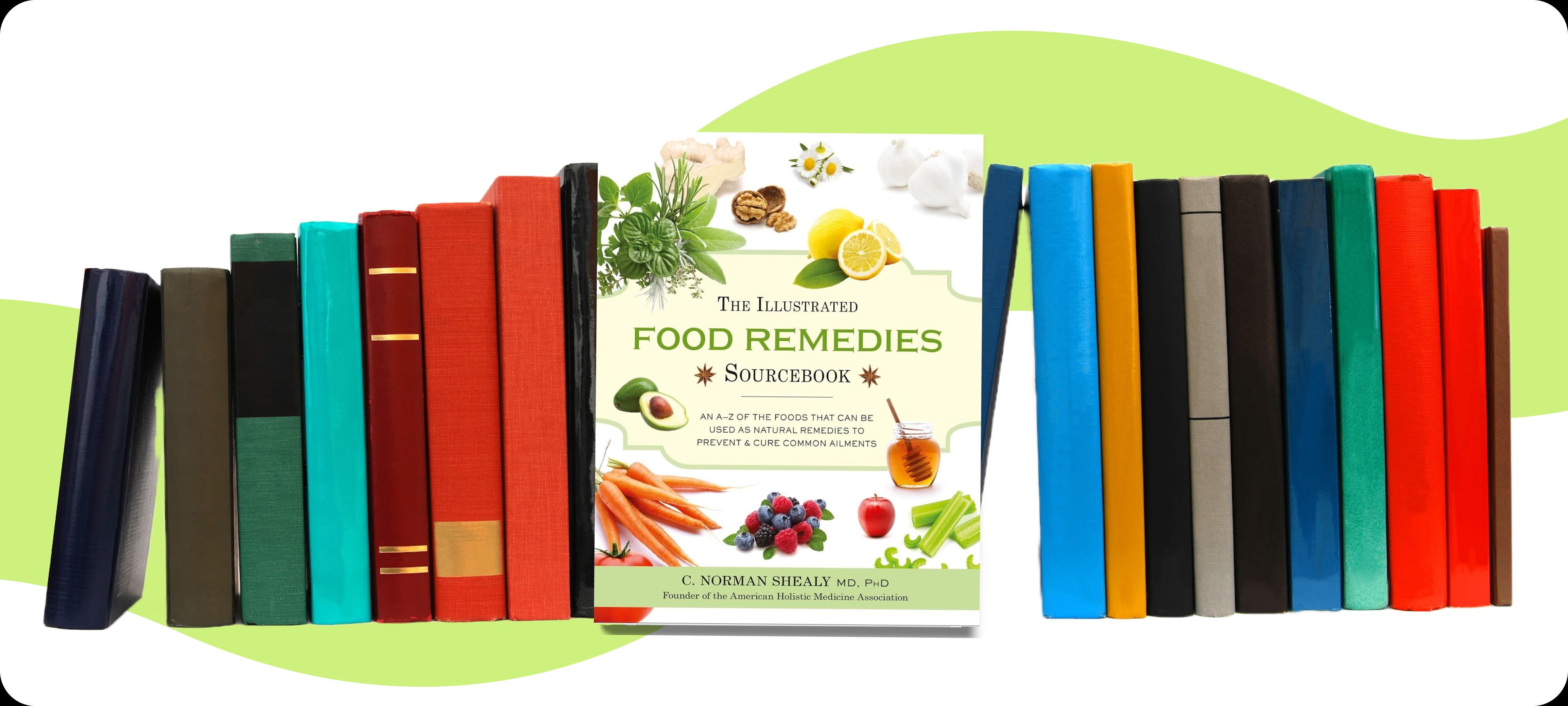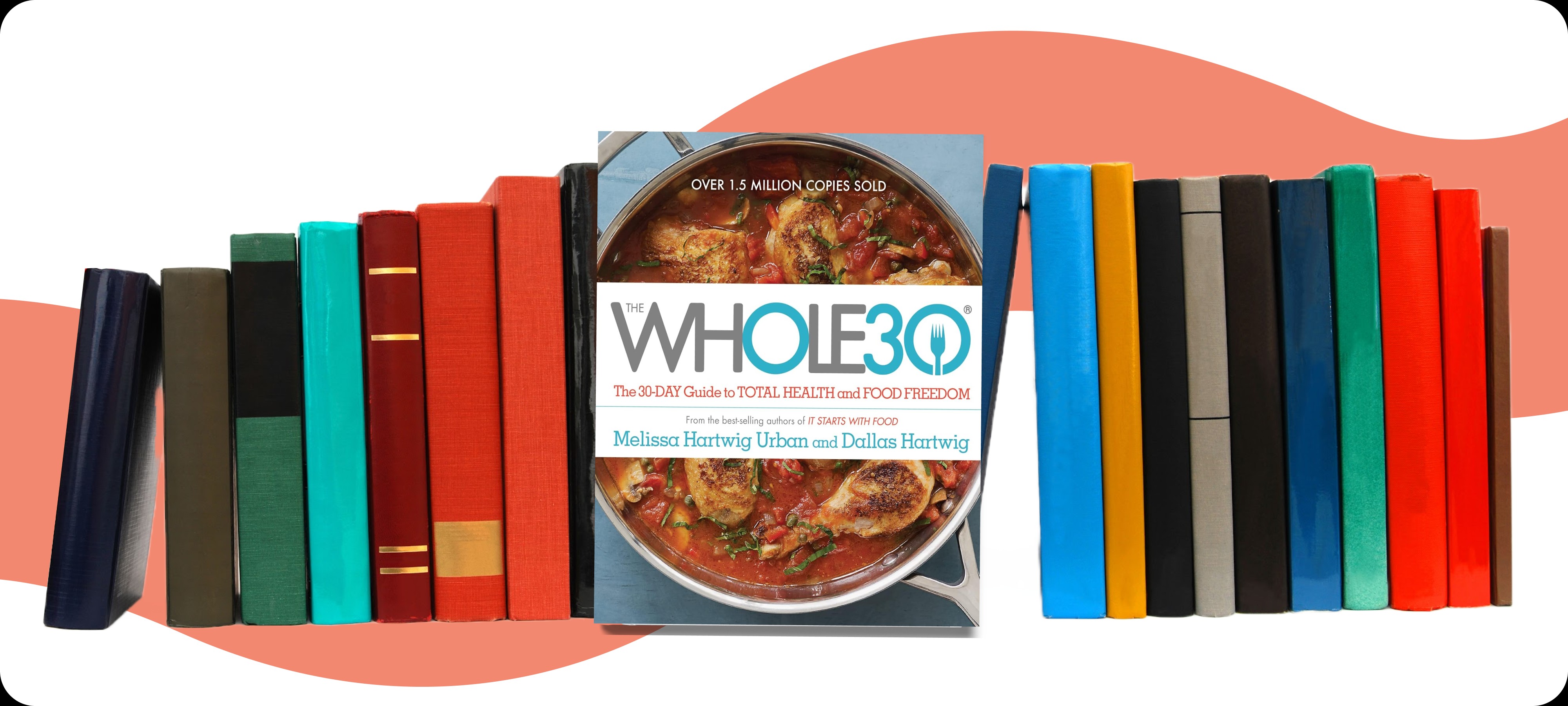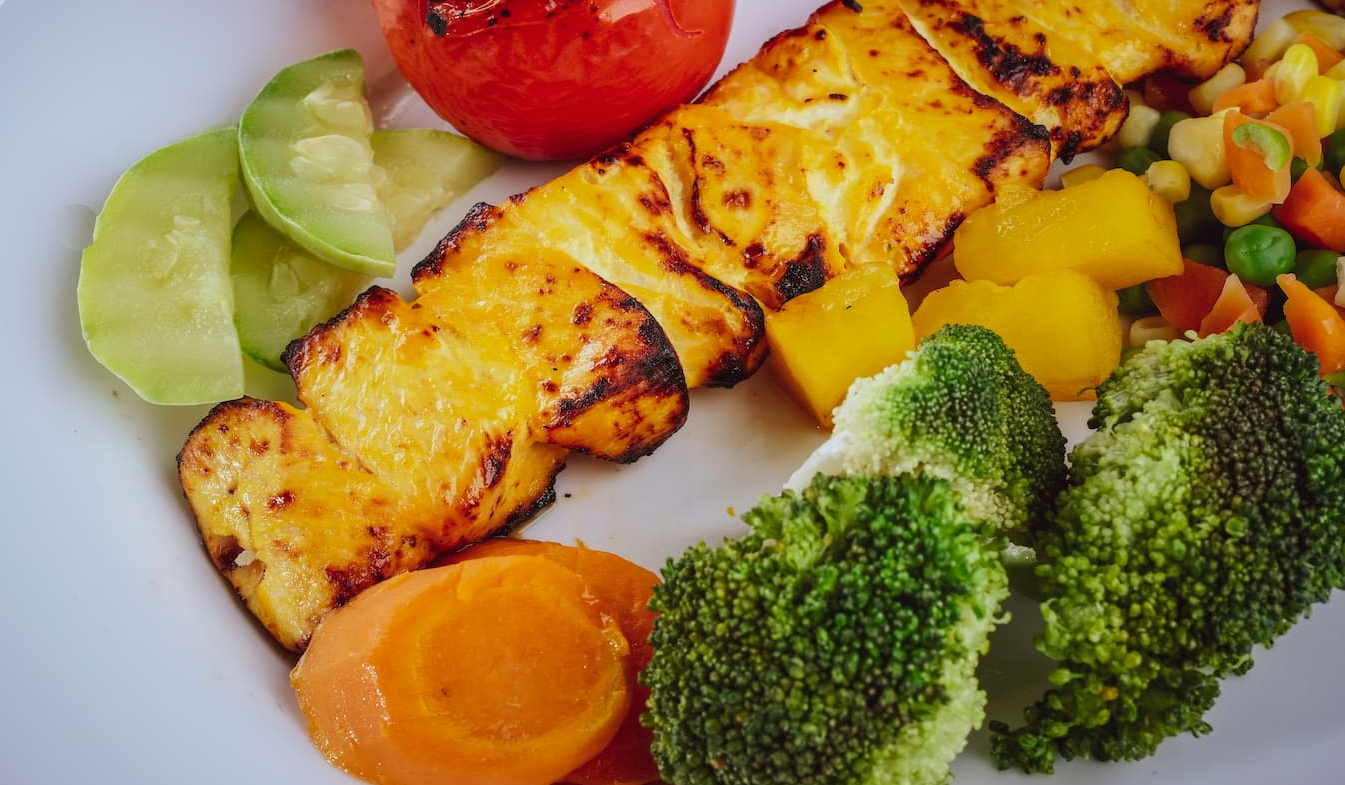Remember that good old cartoon sailor Popeye? He was ahead of the game when he declared his love for spinach. The leafy vegetable is a hero of the super foods army and should never be overlooked if you are planning a healthy lifestyle. Let’s review some of the green spinach’s qualities that will blow you away and make you [nearly] as strong as Popeye.


Spinach – Nutrition facts

Whatever mineral you are looking for is probably in spinach. Spinach is one of the richest sources of Vitamin K, which is vital for blood clotting. There is also more Vitamin C in Spinach than in lemons.
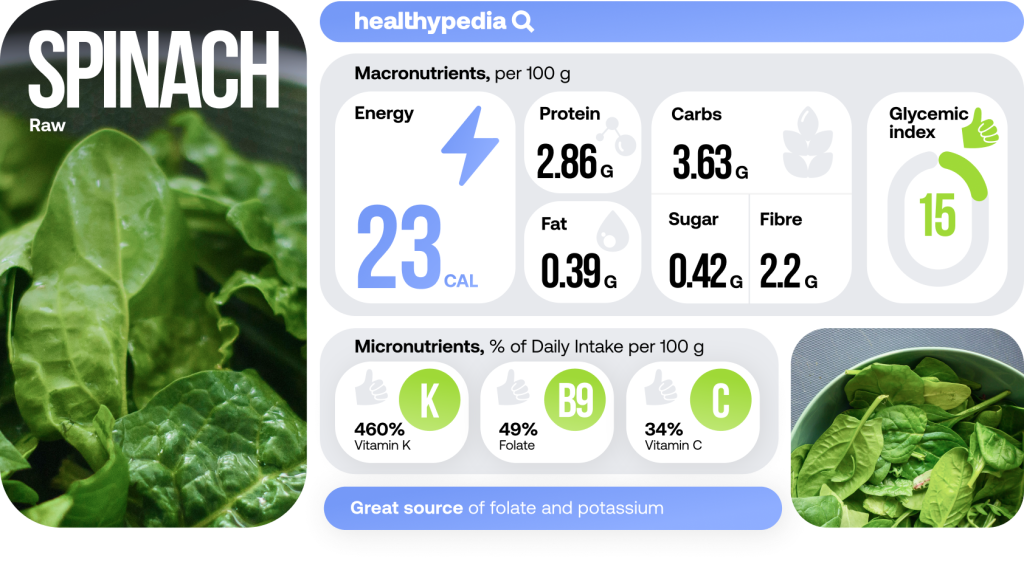
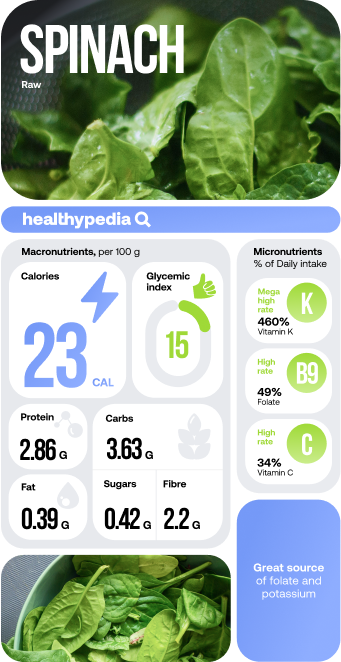
The benefits of spinach – your best friend among greens

1Rich in Vitamin K which helps to improve blood clotting and bone health
Spinach can contain 460% of your daily Vitamin K intake. Such a huge percentage can be found in just 100 g (3.5 oz) of the vegetable. This vitamin is a building block for prothrombin, a protein that is directly involved with blood clotting. Therefore, Vitamin K prevents excessive and uncontrolled bleeding by helping blood coagulation.
Vitamin K is also essential to bone health and body growth, making spinach a particularly good vegetable for children.
2It is loaded with Vitamin C
You can eat just 300 grams of spinach to achieve your daily amount of Vitamin C! Surprising? We know! Spinach is a lightweight and nutrient-packed vegetable option.
Vitamin C is an antioxidant that protects your body against aging and keeps your immune system strong. A 100-gram serving of this vegetable contains 28.1 milligrams of Vitamin C, which is 34% of the recommended daily amount for an adult person.
3Top-notch antioxidant
Spinach is considered to be a valuable source of beta carotene, neoxanthin, lutein, zeaxanthin, and chlorophyll which create a natural antioxidant mixture.
Adding this little green buddy to your diet has a cancer-preventive effect. It also improves your eyesight and reduces the risk of oxidative stress-induced diseases, such as Parkinson’s disease, Alzheimer’s disease, multiple sclerosis, and high blood pressure (hypertension).
4A unique source of folate to produce new cells in your body
Spinach is one of the best sources of folate (vitamin B9). One cup of raw spinach contains 58 mcg of folate or about 15% of your daily recommended level.
Folate’s role in our bodies is to make new cells by helping produce genetic material. That is why it is particularly important to pregnant women and is presented in most prenatal vitamins.
5Helps to prevent and control diabetes
Spinach is also considered a low-glycaemic index food that has little or no effect on blood sugar levels and it is low in calories and rich in potassium. These qualities lower your blood pressure and help you to maintain weight, crucial factors to consider for diabetics. Scientists also suggest that spinach is a promising dietary supplement for preventing insulin resistance.
6Rich in iron but with low absorption rates
Iron is a major component of the protein called hemoglobin, which can be found in our red blood cells. Consuming iron is necessary for keeping your blood system well, as hemoglobin carries oxygen to all parts of your body.
Spinach is known for containing a lot of this element, although there are some difficulties when it comes to absorbing iron from spinach. The body can utilise less than 2% of the iron in Spinach. In other words, this vegetable is not as effective as animal-sourced iron but is a good option for vegans.
7Makes your skin glow and hair shine
This leafy product provides a lot of vitamin A (59% of daily intake per 100 g/3.5 oz), which is used by your body to grow various tissues, including hair and skin. It prevents them from damage, supports their immune system, and helps to keep these parts of your body hydrated.
8It’s a natural antibiotic
Spinach is known for its anti-bacterial activity. It is very rich in flavonoids, including quercetin, myricetin, kaempferol, apigenin, luteolin, patuletin and spinacetin. These compounds are well-known as antibacterial agents against a wide range of pathogenic microorganisms.
Spinach extract can also be used as a natural antibiotic and preservative in pharmaceuticals.
The weak spots of spinach

Too much of anything can lead to unwanted side effects!
Oxalic acid or oxalate is an organic compound found in many plants including spinach. Oxalic acid can bind to minerals and form compounds, for example, calcium oxalate and iron oxalate.. Calcium oxalate is known to be the material of kidney stones, small but painful stones that form in the kidneys.
Although the relationship between dietary oxalate and stone risk is still unclear, doctors recommend moderating the intake of oxalate-rich foods. This is especially relevant for those who are at risk for developing kidney stones. You can also steam your spinach or add some lemon to it to reduce the oxalates.
All that iron contained in spinach is non-heme iron, which means it is not animal-sourced. Non-heme iron element has low bioavailability, meaning it is not as well absorbed as heme iron (from animal sources). You can absorb approximately 1.4% of the iron you take in with your spinach.
‘Well, I’m just going to eat more then!’, is a reasonable response. However this will not help: the problem is in oxalates, which bind with iron thereby making it unavailable for your body to absorb. This also happens with calcium which spinach is also rich in.
Sadly, Popeye might be a little bit more fiction than fact.
On the flip-side, you can steam your spinach to reduce the oxalates and increase the iron bioavailability. Just do not go overboard and fully cook it; this will kill all the nutrients. Putting lemon on it will also help to reduce the oxalates.
We already mentioned that Vitamin K is responsible for blood clotting. Therefore it can also interfere with many kinds of medication. This includes antacids, blood thinners, antibiotics, aspirin, drugs for cancer, seizures, and high cholesterol.
This does not mean you should not consume Vitamin K or eat your spinach. But it is better to check with the doctor about the quantity: remember that spinach has four times the daily dose of Vitamin K in just 100 g (3.5 oz).
Fun facts about spinach
-
Raw spinach is made up of around 91% water.
-
The nutritional content of spinach leaves doesn’t change after dehydration. So dried spinach provides the same benefits for your body as fresh vegetables.
-
Spinach loses almost all of its nutrients when it is boiled. This happens because many of spinach’s nutrients are water soluble, including vitamin C and folate.
-
Spinach became a popular meme material because of its ‘shrinking’ qualities. One-half cup of raw spinach will turn into one tablespoon when cooked.
Spinach in the Blue Zones
Spinach is a beloved leafy vegetable of Blue Zones, alongside kale, swiss chard, and turnip tops.
This leafy product is an everyday food in Ikaria island (Greece), which has been referred to as ‘the island where people forget to die’. One of the popular receipts there is Ikaria Longevity Greens Pie which has spinach filling.
Another Blue Zone area that highly values spinach is Loma Linda in southern California. That small town is mostly populated by a group of Seventh-day Adventists who include salads with spinach in their everyday diet.
Let’s sum spinach up

Spinach has a well-deserved status as one of the healthiest foods on Earth. It boosts your immune system and anti-antioxidant activity, helps prevent diabetes, and provides your body with folate, which is essential for producing new cells. We strongly recommend including it in your regular diet. But remember, moderation is key!
Not enough? Here is more!
The benefits of spinach are almost countless, but if you still need some motivation to add this leafy buddy to your diet, we recommend this video by Natural Health Remedies YT channel. It goes deeper in explaining what diseases can be controlled by consuming spinach and how this leafy vegetable affects your well-being.

